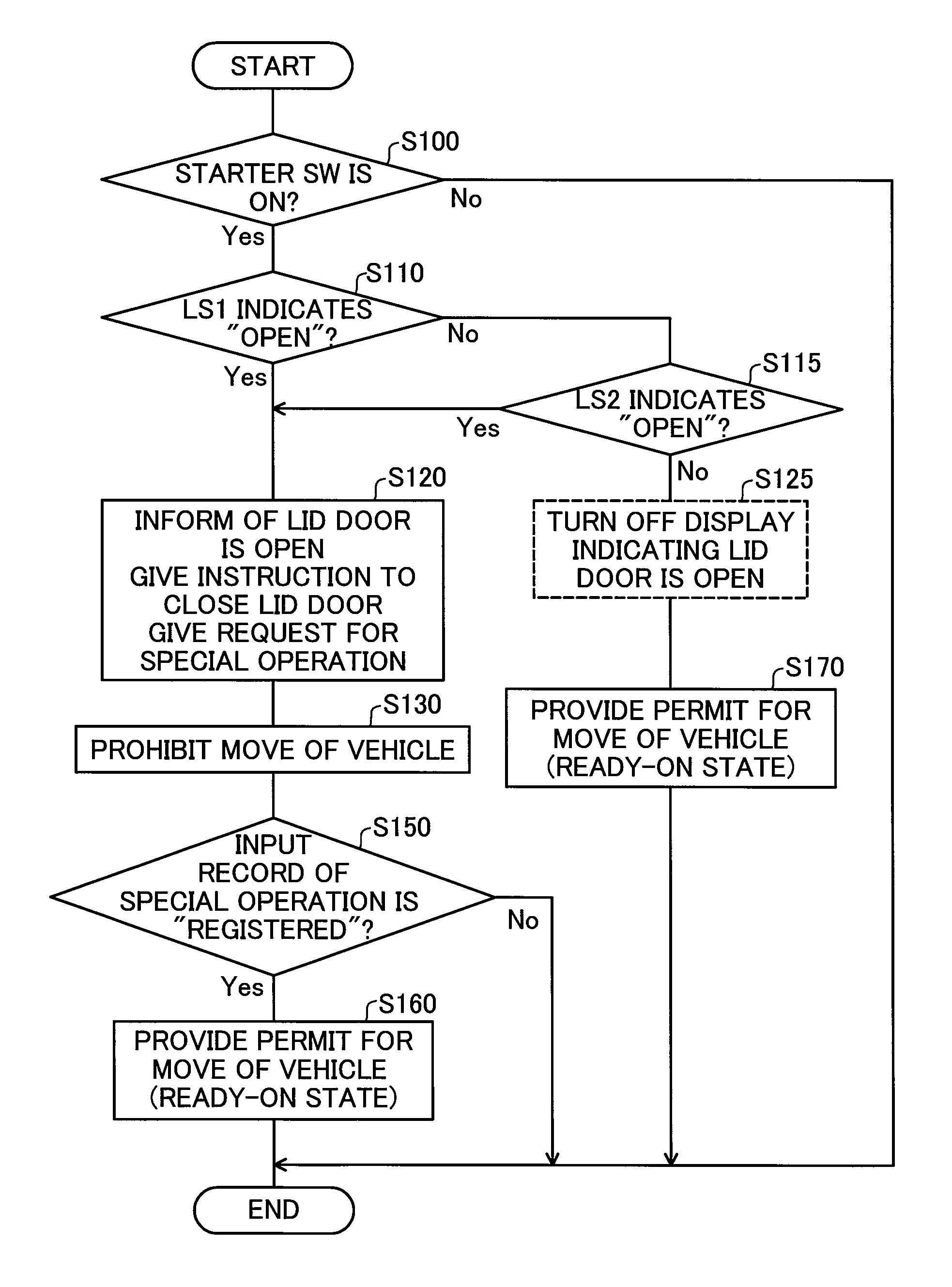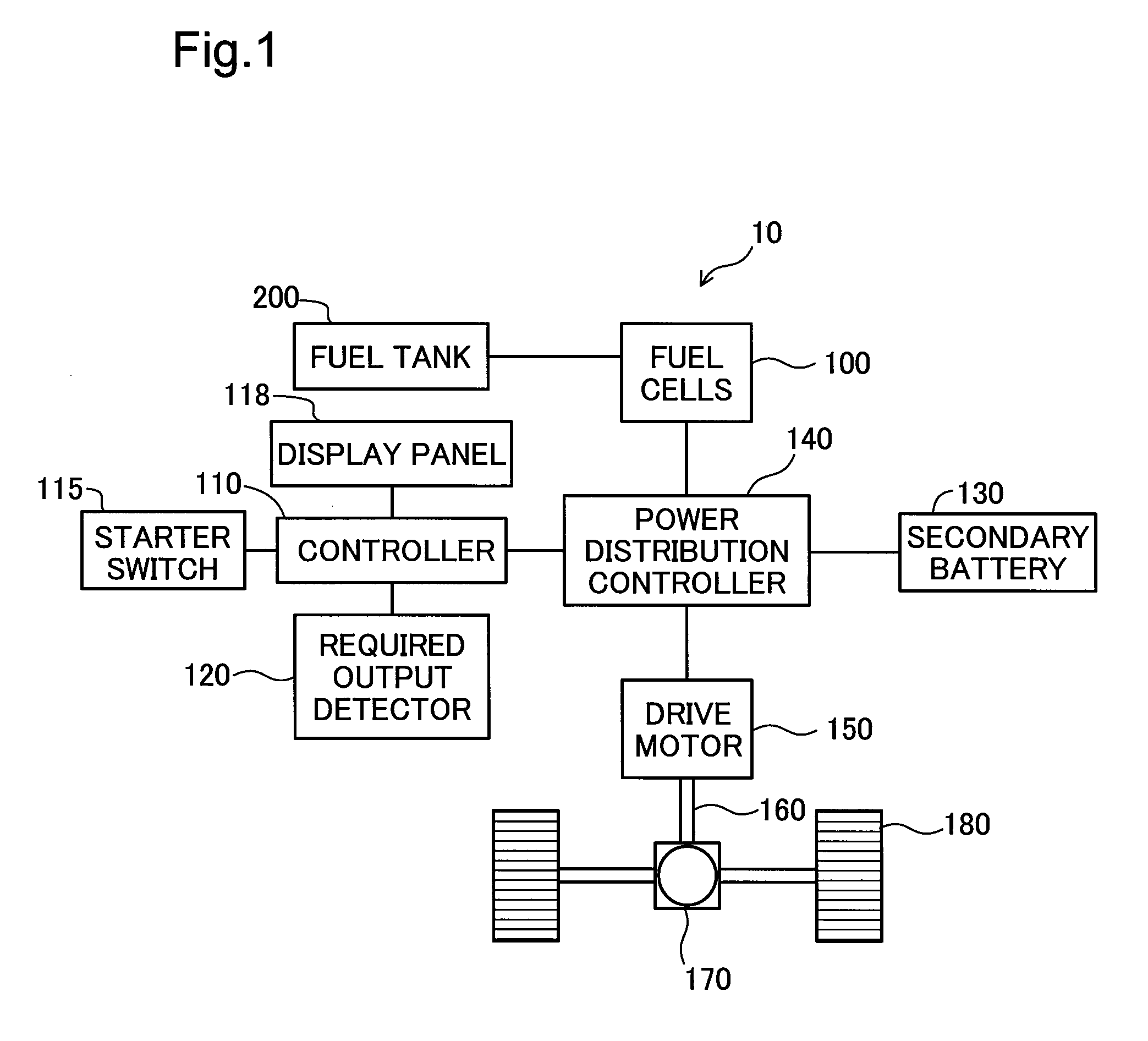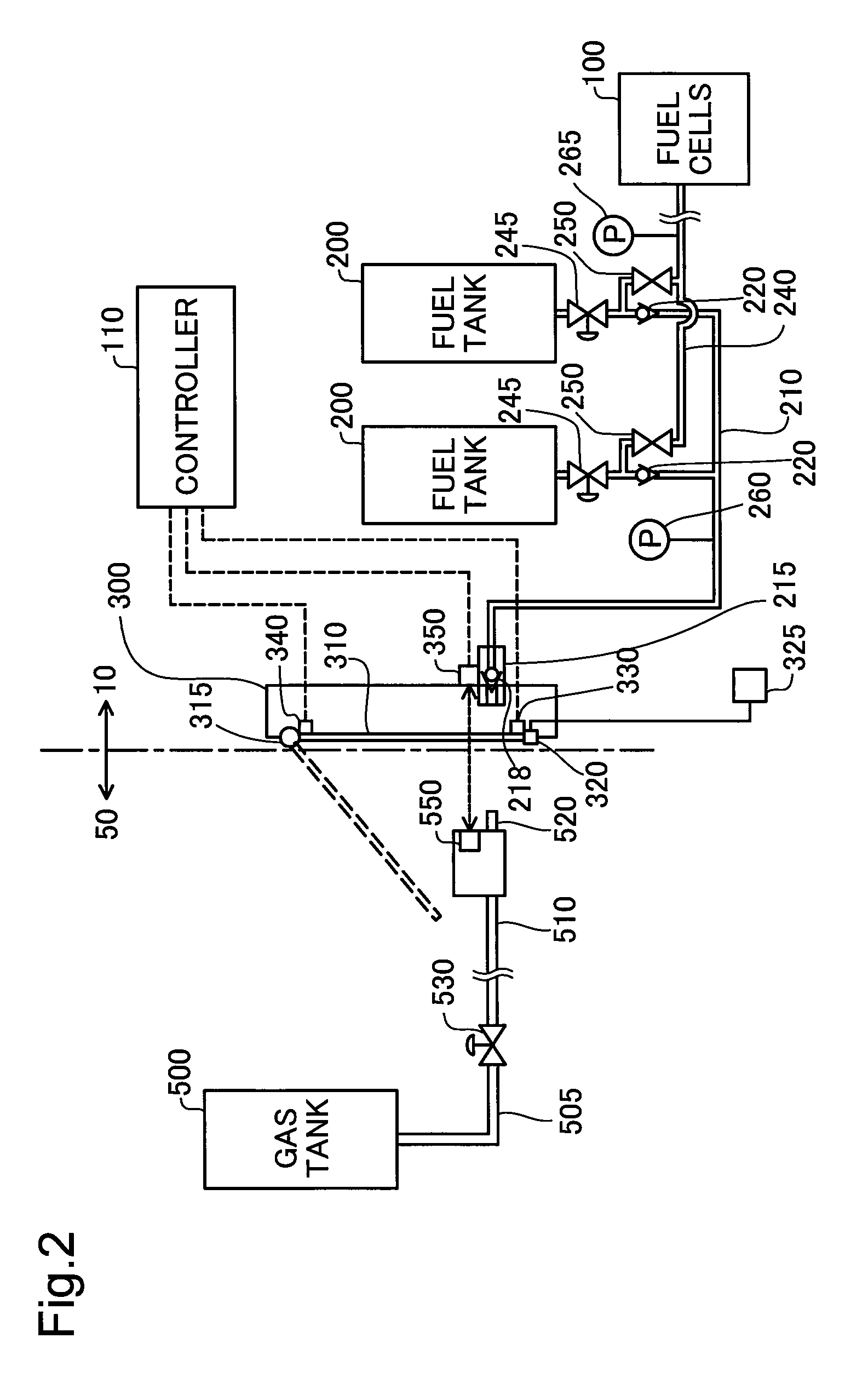Vehicle with fuel cells mounted thereon and control method of the vehicle
a technology of fuel cells and fuel cells, which is applied in the direction of battery/fuel cell control arrangement, electric devices, propulsion by batteries/cells, etc., can solve the problems of vehicle not being allowed to run (move), and the vehicle not being allowed to run, so as to eliminate the prohibition of the movement of the vehicle and attract the driver's attention
- Summary
- Abstract
- Description
- Claims
- Application Information
AI Technical Summary
Benefits of technology
Problems solved by technology
Method used
Image
Examples
first embodiment
[0022]FIG. 1 is a diagram illustrating a fuel cell vehicle 10 (hereinafter also simply called “vehicle 10”) with fuel cells mounted thereon. The vehicle 10 includes fuel cells 100, a controller (also called “ECU (electronic control unit).”) 110, a starter switch 115 (also called “ignition switch 115”), a display panel 118, a required output detector 120, a secondary battery 130, a power distribution controller 140, a drive motor 150, a driveshaft 160, a power distribution gear 170, wheels 180 and a fuel tank 200.
[0023]The fuel cells 100 are power generation devices configured to generate electric power through electrochemical reaction of a fuel gas with an oxidizing gas. The fuel tank 200 is configured to store the fuel gas used for the fuel cells 100. This embodiment uses hydrogen as the fuel gas. The controller 110 controls the operations of the fuel cells 100 and the secondary battery 130, based on a required output value obtained from the required output detector 120. The requir...
second embodiment
[0044]FIG. 6 is a flowchart showing a processing flow from an on operation of the starter switch 115 of the vehicle 10 to an off operation of the starter switch 115 according to a second embodiment. The configuration of the vehicle 10 according to the second embodiment is similar to the configuration of the first embodiment shown in FIGS. 1 and 2. According to the second embodiment, when either one of the signals LS1 and LS2 of the two lid sensors 330 and 340 indicates “open”, ons and offs of the starter switch 115 are repeated a specified number of times under a predetermined condition as the special operation, in order to eliminate the prohibition of the move of the vehicle 10 and set the state of the vehicle 10 to the ready-on state so as to allow the vehicle 10 to move.
[0045]The controller 110 detects a press of the starter switch 115 (on operation) with depression of the brake pedal at step S300 and proceeds to step S305. When not detecting a press of the starter switch 115 at ...
third embodiment
[0060]In the case of a closed-fixed defect that both the signals LS1 and LS2 of the lid sensors 330 and 340 indicates “closed” despite that the lid door 310 is actually open, the vehicle 10 is likely to move in the state that the nozzle 520 of the hydrogen station 50 is connected with the receptacle 215 of the fuel cell vehicle 10. The third embodiment describes detection of such a closed-fixed defect.
[0061]FIG. 7 is a diagram illustrating the principle of the closed-fixed defect with regard to the signals LS1 and LS2 of the lid sensors 330 and 340. In the vehicle 10, in the state that the lid door 310 is physically open, the nozzle 520 of the hydrogen station 50 is connectable with the receptacle 215 of the vehicle 10 to fill hydrogen. The pressure sensor 260 of the vehicle 10 is monitored during hydrogen filling. In the state that the value of the pressure sensor 260 is increased by a pressure value ΔP that is not less than a predetermined reference value, when the signal LS1 of t...
PUM
 Login to View More
Login to View More Abstract
Description
Claims
Application Information
 Login to View More
Login to View More - R&D
- Intellectual Property
- Life Sciences
- Materials
- Tech Scout
- Unparalleled Data Quality
- Higher Quality Content
- 60% Fewer Hallucinations
Browse by: Latest US Patents, China's latest patents, Technical Efficacy Thesaurus, Application Domain, Technology Topic, Popular Technical Reports.
© 2025 PatSnap. All rights reserved.Legal|Privacy policy|Modern Slavery Act Transparency Statement|Sitemap|About US| Contact US: help@patsnap.com



